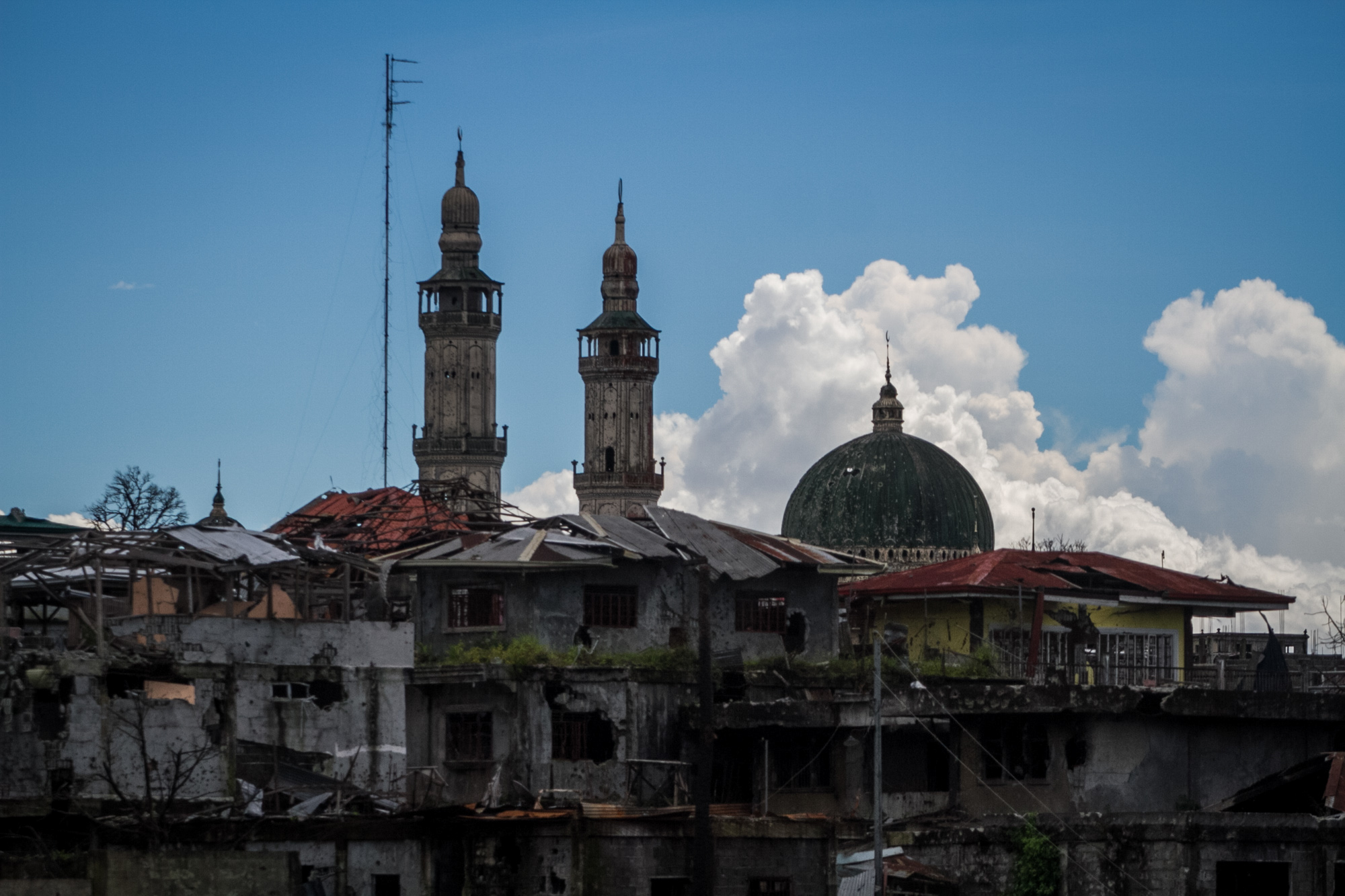Marawi Year One: Some Notable Reports

The seige damaged proerties in the city of Marawi, the main battle area between the government and the Maute forces. | Photo by Mark Saludes
THE FIRST year anniversary of the siege of Marawi occasioned several reports and specials aired in primetime newscasts from May 21 to May 27. These included a chronology of the country’s longest urban warfare and specials which picked up on thematic concerns in the aftermath of war. CMFR takes note of media efforts to call attention to important issues, the assistance that has been given by government to those affected or the lack of it, in some cases. Such post-war reports serve to remind everyone of the long-term impact of war calling for long-term solutions, deserving of public attention and urgent government action.
State of Schools, IDPs
ABS-CBN 2’s TV Patrol looked at the state of schools and the preparation for the coming start of classes in Marawi. Education Secretary Leonor Briones said in the report that they are setting up temporary learning centers and clustering some schools and joining the student population from ground zero, an area totally destroyed, with other students in other locations where there were available rooms (“DepEd,singuro ang pagbubukas ng klase sa Marawi sa Hunyo sa kabila ng pinsala at aberya”).
The same newscast reported on the situation of evacuees in tent communities, taking note of their water supply problem. The report also noted that there are 27,925 families classified as internally displaced persons according to the Lanao del Sur Public Information Office (“Supply ng tubig, kinakapos pa rin sa mga evacuation center”).
Another TV Patrol report tackled the problem of missing persons. Interviews with wives who have been waiting for their husbands lamented that they don’t know whether they should wait or presume that their spouses are dead. Having taken DNA tests which will help identify dead bodies, the women have not yet received results. It is also unclear which agency is in charge of the system or process of determining the fates of the missing (“Mga nawawala dahil sa Marawi siege, tinatayang nasa 70 hanggang 100 pa”).
The same issue drew GMA-7’s I-Witnessto revisit the ruined city. The documentary “Missing in Marawi” interviewed several IDPs who are still looking for their loved ones months after the siege ended and featured NGO leaders who are helping the establish a search system.
Note on Rehab
Reporting the rehabilitation plans, CNN Philippines’ News Night noted that “two companies under the Bangon Marawi consortium were once blacklisted by the World Bank for their involvement in alleged bidding collusion (“Residents hope for Marawi’s speedy rehabilitation”). TV5’s Aksyon also made the same observation, noting that there are no clear rehab plans yet (“Mga residente ng Marawi, inalala ang mga nawalay na mahal sa buhay”).
(See also CMFR Cheer: “Digging up Dirt: Investigating Marawi’s Rehabilitation Plans”)
Chronology
TV Patrol and 24 Oras aired timeline of events on day one and the five months of fighting which included highlights – the declaration of martial law, the deadlines set by the government on when fighting will end and the military friendly fire which resulted in the death of soldiers. The report also identified problems faced by evacuees. These help to remind the public that the anguish of the people of Marawi continues even after the fighting stopped.
CNN Philippines’ special “Marawi: Hamon ng Pagbangon” on May 22 looked back on the plight of evacuees during and after the siege, also noting the lack of concrete plan on rehabilitation and issues such as land titling. It also looked at the continuing issue on national security, including the ISIS threat.
Media reporting should not be limited to milestones recalling the siege or the liberation of the city. The story of Marawi did not end with government reclaiming its control over the rebel territory. Journalists should make sure that they do not miss out on the news rising from the ruins of war.
Leave a Reply